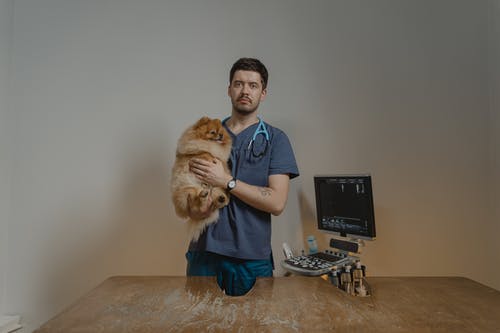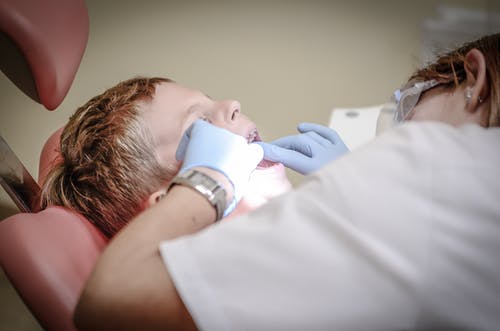Are you curious about what happens during a veterinary cold laser therapy session? You’re in the right place. Veterinary laser therapy is an innovative treatment method that veterinarians across the globe are employing to treat various pet health issues.
This therapy is gaining recognition for its efficiency and the countless benefits to our four-legged companions.
Read on to learn more.
Understanding the Concept of Veterinary Laser Therapy
Laser Therapy and Light Amplification of Stimulated Emission of Radiation
At first glance, the term “laser therapy” might sound complex, but it’s based on a straightforward principle. Laser, an acronym for Light Amplification of Stimulated Emission of Radiation, utilizes a device that produces highly concentrated light.
Unlike normal light, which radiates differing wavelengths and is dispersed in all directions, laser light consists of monochromatic, coherent, and collimated light. These properties enable laser light to focus precisely, making it perfect for therapeutic use in pets.
Laser Classes in Veterinary Medicine
Just like in other fields, lasers in veterinary medicine are divided into classes depending on their potential energy output. Four recognized classes range from Class 1, like those used in barcode scanners, to Class 4, used in surgery to cut and cauterize tissues. Class 3 lasers are the most commonly used for therapeutic purposes.
The Interaction of Laser Therapy and Pet Tissue
Laser therapy revolutionizes conventional treatment methods with its unique interaction with tissue. The procedure induces a process known as photobiomodulation in animals. It alters cellular and tissue physiology, thus triggering a domino effect of beneficial therapeutic outcomes.
The Benefits of Laser Treatment in Pets
Veterinary laser therapy is packed with benefits for pets.
Here are a few:
- Release of endorphins, providing natural pain relief
- Vasodilation promotes increased blood flow and thus speeds up healing
- Decreased inflammation, reducing discomfort and boosting recovery
- Promotes repair and rejuvenation of cells
Familiarizing yourself with procedures like vet cold laser therapy in Mahopac, NY, could provide an alternative or supplemental treatment for your pet.
Veterinary Conditions Treated With Laser Therapy
1. Laser Therapy for Long-Term Conditions
Conditions like chronic arthritis, tendon and ligament injuries, and traumatic injuries can significantly benefit from veterinary laser therapy. The procedure helps manage the pain and inflammation associated with these conditions, improving the quality of life of your companion animals.
2. Surgical Applications of Laser Therapy
Laser therapy doesn’t stop at treating chronic and traumatic conditions. It is also an important tool in the surgical arena. Veterinary laser therapy is used post-operatively on surgical incisions, significantly improving wound healing and reducing recovery time.
3. Your Older or Exotic Pets and Laser Therapy
Laser therapy is a boon, especially for unique pets, including those with liver disease and older pets with diminished organ function, who may not handle traditional medication well. Laser treatment’s gentle, non-invasive nature makes it a safe and effective therapy for exotic pets and those with specific ailments.
What to Expect During a Veterinary Cold Laser Therapy Session
The Procedure of a Laser Therapy Session
A typical service like pet vaccination in Mahopac, NY, is quick and straightforward, but what about a laser therapy session? Well, your pet won’t even realize they’re being treated. During the session, a handheld laser wand is gently passed over your pet’s body, focusing on the area of concern. It’s a soothing experience most pets find relaxing.
Duration of Laser Therapy Treatments
Depending on your pet’s condition, these sessions usually last between 15 and 30 minutes. Chronic cases may see regular weekly sessions, while acute conditions like open wounds may require daily sessions until improvement is evident.
Safety of Laser Therapy for Pets
1. Primary Precautions in Laser Therapy
When it comes to any veterinary procedure, the priority is always the safety and well-being of the pet. In veterinary laser therapy, specific steps are taken to protect your furry friend’s health and the professionals providing the treatment. A critical aspect of this process is the use of protective goggles.
2. Importance of Eye Protection
Everyone in the room, including your pet, must wear protective goggles during laser therapy. These are not ordinary sunglasses but specialized goggles designed to shield the eyes from the concentrated light emitted by the laser unit. This step is crucial to prevent possible retinal damage, as the laser light, if shined directly into the eyes, could cause injury to the delicate structures within.
3. Professionally Managed Laser Settings
The success of a laser therapy session is largely dependent on a host of factors meticulously managed by professionals. These include:
- Adapted Treatment: Laser therapy machines are not one-size-fits-all. Instead, they need adjustment based on the individual pet’s condition and the specifics of the ailment being treated. This personalized approach ensures that every therapy session is tailored to tackle the issue at hand effectively.
- Intensity and Duration Control: Adjustments to the laser therapy machine are not arbitrary. They meticulously control the intensity and duration of the laser light. Such precise control ensures the pet gets the right therapy dosage, bringing about the necessary benefits without any detrimental side effects.
- Safety Assurance: Pet welfare remains a priority throughout the session. As trained professionals manage the process, they follow strict guidelines that prioritize the animal’s safety. This careful approach negates risks that could arise from the process, such as thermal injuries.
- Professional Acumen: The expertise of the professionals running the therapy session is invaluable. Their comprehensive knowledge of the machine and the therapy process allows them to ensure that pets remain safe and comfortable during the treatment. Their experience is instrumental in delivering effective treatments tailored for every pet.
This professional handling is paramount in ensuring that pets receive the treatment they need and have a positive, safe experience during each laser therapy session.
4. Continuous Monitoring and Adjustment
Pet health professionals remain attentive throughout the laser treatment session, even after the initial setup. Continuous monitoring allows any necessary adjustments to the laser settings to be made in real time, ensuring the safety and comfort of the animal. This vigilant approach contributes to the exceptional safety record of veterinary laser therapy.
Conclusion
With advancements in veterinary medicine, your pets now have access to treatment options that are less invasive, safer, and incredibly efficient. Laser therapy is a technological marvel that promises improved health and quality of life for your beloved pets.
Appreciating the science behind such concepts will help us make more informed decisions for their benefit. Let’s welcome these advancements and give our pets the best care they deserve.





